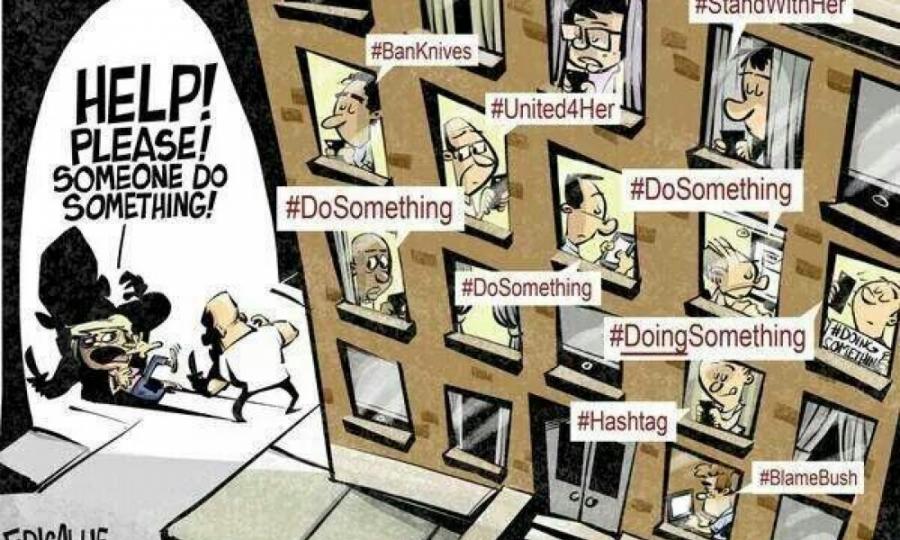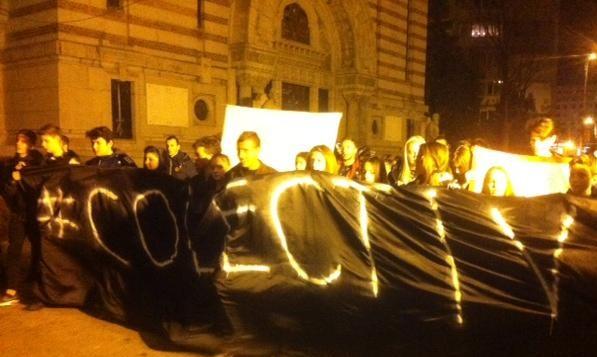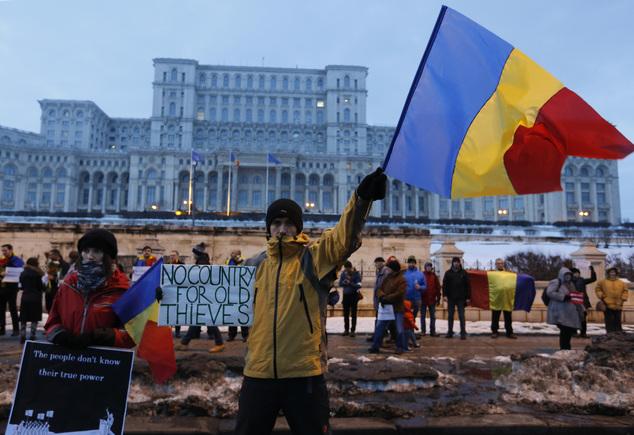
The #RomanianProtests: How online activism succeeded in overthrowing the Romanian government
In the present era of globalization, where the speed of information has marked the 21st century in an indisputable manner, activism on social media has been regarded, in many cases, as slacktivism: feel-good activities with not much or no effect other than making the slacktivist feel good about him- or herself (Morozov, 2011). The recent Romanian protests against the government’s corruption prove that this is not always the case and that social media have become a major organizing tool for political and social movements.
I am sure that everyone who has a Facebook account has come across the French flag profile pictures, following the Paris attacks in November 2015. By also introducing the well-known #PrayforParis as a gesture of support for the mourning nation, the act of mass compassion received many criticism regarding self-indulgent slacktivism. Rurik Bradbury, Twitter's @ProfJeffJarvis author, declared in an interview: “the part that feels the most useless to me is people’s vicarious participation in the event, which on the ground is a horrible tragedy, but in cyberspace is flattened to a meme like any other. Millions of people with no connection to Paris or the victims mindlessly throw in their two cents: performative signaling purely for their own selfish benefit, spreading information that is often false and which they have not vetted at all, simply for the sake of making noise”.

The #colectiv revolution or how to overthrow a government
Not all online activism is slacktivism, some online activism leads to offline change. One example is the revolution in Romania, which started online a little over one year ago, and which generated nationwide protests. After a deadly fire erupted in Bucharest’s Colectiv nightclub on October 30th, 2015, killing 64 people and injuring another 147, the investigation showed that the building was completely unfit for any public events, but had an operating permit nevertheless. The already shocked and grieving public used social media to blame the current government. On November 3rd, 15.000 people protested in front of Victoria Palace.

As a consequence, on the morning of November 4th, the Ponta government resigned.
"As the Prime Minister […] I have an obligation to see the legitimate anger in society and to have greater responsibilities than the owners (of the club). […] I can handle any battle with political opponents, but I simply cannot battle the people of this country. […] I hope the government's resignation will satisfy the people who came out in the streets”, Ponta said in a statement.
Despite the resignation, protests continued for six more consecutive nights, with about 35.000 people getting together in Bucharest and 30.000 more in other Romanian cities. Demonstrators demanded early elections and a total change of the political class. Protests in solidarity with those in the country took place in London, Paris, and Madrid. #Colectiv was one of the hashtags used by protestors on social media, and eventually became the name of the revolution and, nonetheless, a social calling. Why revolution, indeed? Because, as a result, not only the government resigned, but, as requested by the public, it changed into a technocrat one. For the first time in six years, the Romanian government was approved by the President and not only imposed by the Parliament. People began to hope once more.
The other side of the coin: when social media activism actually works
A quick glimpse at the recent European news will bring the subject of the Romanian protests into the light. In terms of activism, Romania has proved to be a verbose country, starting with the '89 revolution, which pulled the country out of the communist regime. The current President, Klaus Iohannis, was elected in November 2014 as a consequence of a massive social media movement, where Romanian citizens living in diaspora inundated the voting stations in European cities. As a consequence, Iohannis defeated the opponent Victor Ponta with 10 points. And so Romanians have developed a particular taste for revolutions. Once social media presented its interactive features and the ability to quickly disseminate information and rally supporters, Romania knew that it can generate an offline movement, and took full advantage of it. The recent events prove it just right.
After six nights of what has become the biggest Romanian protest movement since the fall of communism in 1989, the protesters in Bucharest and other cities in Romania appeared to have won this battle against the Government. As a consequence of the protests, the emergency decree which would only punish fraud if the sum involved was higher than €44.000 (200.000 RON) was repealed.

The protests in the streets which reached half a million people in Bucharest on the 5th night alone, plus another half million in other major Romanian cities, as well as diaspora cities, started online as a wave of resistance against the Emergency Decree 13. Popularized on Facebook and Twitter by using the hashtag #rezist as a symbol of the ongoing fight against corruption, the online revolution quickly went offline. On February 9th, only five days after the law was repealed as a response to the overwhelming street protests which #resisted, the Minister of Justice, Florin Iordache, resigned.
But the protesters did not stop their movement. On the contrary, a Facebook page called “600.000 pentru Romania” (600.000 for Romania), as well as thousands of social media posts encouraged people not to give up, to keep fighting and to #resist. So, on the 26th of February, more than one month after the movement started, 5.000 people were still protesting in front of the Victoria Palace in Bucharest, the headquarters of the Romanian government. This time, though, the protesters demanded more: the Government’s resignation. Although up to this point, Prime Minister Sorin Grindeanu had shown no sign of stepping down, this wouldn’t be the first time when offline movements, started on social media, caused a Romanian Government to resign.
Social Media = Social Change?
As the communications landscape gets thicker, the networked population is gaining wider access to information and an enhanced ability to engender collective action. While there is indeed slacktivism in the sense defined earlier, there are also forms of online activism that spill over into more traditional mass political actions. In fact, it is to be expected that such forms of online-offline activism will grow. The Romanian online revolutions proved one thing: that there is nothing 'virtual' about this particular type of online activism, and that it has the potential for generating and fueling forms of mass politics that are genuinely 'revolutionary'. People can use a platform like Twitter or Facebook for a greater purpose and change can come through an online movement. Finally, the revolution may not be mediatized, but it can be organized online.
References
Associated Press. (2017, February 4). Romania govt vows to repeal law that goes easy on corruption.
Fox News. (2017, February 12). Romania: 13th day of govt protests draw tens of thousands.
Plumb, A. (n.d.). #Colectiv anger sets Romania ablaze.
Morozov, E. (2011). The net delusion: The dark side of internet freedom. New York: PublicAffairs.
Romanian Insider. (2017, February 5). Over 200,000 people light up Bucharest’s Victoriei Square in biggest protest Romania has seen in years.